Monthly Archives: May 2022

 My grandniece, Maeve Parmely is turning three years old today. She is a child of the Covid era, and for much of her early live was only around her family and grandparents. The situation has made her a little shy around people, even extended family. Now we are having monthly family dinners so that Maeve and her siblings, Reagan, Hattie, and Bowen can all get to know us better. The older children warmed up to us quickly, but Maeve was the baby, and to her, we were “Stranger Danger.” While we wanted Maeve to warm up to us, we also knew that it was probably better for her to have time to learn who we are to her before she just allows us to get close. I never felt like she should be rushed, even though, I wanted to get to know her.
My grandniece, Maeve Parmely is turning three years old today. She is a child of the Covid era, and for much of her early live was only around her family and grandparents. The situation has made her a little shy around people, even extended family. Now we are having monthly family dinners so that Maeve and her siblings, Reagan, Hattie, and Bowen can all get to know us better. The older children warmed up to us quickly, but Maeve was the baby, and to her, we were “Stranger Danger.” While we wanted Maeve to warm up to us, we also knew that it was probably better for her to have time to learn who we are to her before she just allows us to get close. I never felt like she should be rushed, even though, I wanted to get to know her.
These days, I am finding that Maeve and I actually have some things in common. At our dinner a couple of months ago, Maeve was talking to her mom, and she glanced am me, and noticed my fingernails, which are always polished, and usually have a decorative sticker on them. She stopped talking immediately, and I asked her if she liked them. She said yes, and suddenly, we had our own thing to talk about. We actually polished her nails that night, but we didn’t have any decorative stickers. This week, at our dinner, I’m going to surprise her with some stickers for her nails. I’m so excited about this new treat that I can do for her. While Maeve is rather a girly girl, she can keep up with her sisters and brother in the “rough and tumble” area too. And this girly girl even likes camo. She is able to do pretty much anything she wants to do… including telling the cows what to do.
including telling the cows what to do.
While Maeve is a bubbly girl when she, she is very quiet around strangers. Her sisters and brother have seen that bubbly side of her, as well as her temper, if they get on the wrong side of her. It is hard to accept that I am considered a stranger, and I am working to see if I can change her view of me. While Maeve may always be a very private person, I think she probably has a lot to say when you get to know her. Maeve will be going to preschool next year, and I think being around other children will really bring her out of her shell. Today is Maeve’s 3rd birthday. Happy birthday Maeve. Have a great day!! We love you!!

 Each year I find myself more and more surprised at just how many years I have been without my moms. My mom, Collene Spencer left us February 22, 2015 and my mother-in-law, Joann Schulenberg left us January 4, 2018. So many Motherless Mother’s Days have come and gone, and there will be so many more to follow, but I know that my mom and my mother-in-law are in my future, not my past. They are waiting in Heaven for the coming arrival of all of their beloved children, grandchildren, great grandchildren, and many more greats to come.
Each year I find myself more and more surprised at just how many years I have been without my moms. My mom, Collene Spencer left us February 22, 2015 and my mother-in-law, Joann Schulenberg left us January 4, 2018. So many Motherless Mother’s Days have come and gone, and there will be so many more to follow, but I know that my mom and my mother-in-law are in my future, not my past. They are waiting in Heaven for the coming arrival of all of their beloved children, grandchildren, great grandchildren, and many more greats to come.
Of course, it really isn’t a Motherless Mother’s Day because I am a mother, as are my sisters and sisters-in-law, my daughters, nieces, and my soon to be granddaughters-in-law. With all of these wonderful moms in my life, I 
 am never without someone to wish a happy Mother’s Day. And while I don’t have my moms with me this year, I know they are happy and well. Mother’s Day is a day to celebrate moms, not to be sad, so I will be happy for all the mothers I know, and happy for my own honor to be a mom. These are among the very best days we will ever know. Happy Mother’s Day to all the mothers I know!! I love you all very much!!
am never without someone to wish a happy Mother’s Day. And while I don’t have my moms with me this year, I know they are happy and well. Mother’s Day is a day to celebrate moms, not to be sad, so I will be happy for all the mothers I know, and happy for my own honor to be a mom. These are among the very best days we will ever know. Happy Mother’s Day to all the mothers I know!! I love you all very much!!
To my daughters, Corrie Petersen and Amy Royce, you both make me so proud every day. You are both wonderful, caring people who would do anything in your power to help other people, and that is an honorable thing to do. People know that they can count on you, and I do too. Whatever is needed, you are there to lend a helping hand. It is a noble thing to do, and it is to your credit. You have both raised wonderful children, who 
 have grown into wonderful, responsible adults.
have grown into wonderful, responsible adults.
Now we have a new generation of moms coming along, with my future granddaughters-in-law, Karen Cruickshank and Athena Ramirez, who have or soon will have the next generation of babies in our family. I am so proud of both of you for the mothers that you are. Your kind and loving ways warms my heart. You are both beautiful moms, and we love you very much.
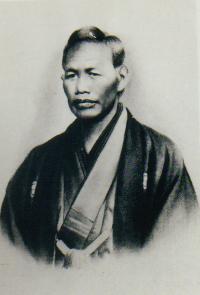 As a young America began to receive immigrants from other countries, it began to achieve its “melting pot” status. It wasn’t until May 7, 1843, that the first Japanese immigrant would arrive on the scene. A young 14-year-old fisherman, named Manjiro in America by way of a whaling ship. It wasn’t really an intentional immigration, because the boy and his fellow crew members were caught in a violent storm that caused their ship to wash up on a desert island 300 miles away from their coastal Japanese village. It was rather a “Gilligan’s Island” kind of situation, except that it didn’t last nearly as long as the famous sitcom.
As a young America began to receive immigrants from other countries, it began to achieve its “melting pot” status. It wasn’t until May 7, 1843, that the first Japanese immigrant would arrive on the scene. A young 14-year-old fisherman, named Manjiro in America by way of a whaling ship. It wasn’t really an intentional immigration, because the boy and his fellow crew members were caught in a violent storm that caused their ship to wash up on a desert island 300 miles away from their coastal Japanese village. It was rather a “Gilligan’s Island” kind of situation, except that it didn’t last nearly as long as the famous sitcom.
After five months on the island, an American whaling ship showed up and rescued Manjiro, who was later adopted by American Captain William Whitfield, who renamed him John Mung and brought him back to the states to his home in Massachusetts. While he was grateful for his rescue, Manjiro always felt drawn to his own country, and eventually returned to Japan. He then became a samurai and worked as a political emissary between his home country and the West, according to reports, but it would be another 20 years…around 1860, before Japanese immigrants really began coming to the United States. At that point, groups of 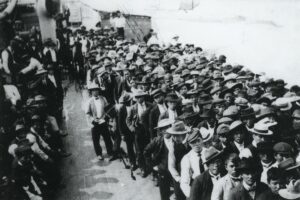 Japanese immigrants began arriving in the Hawaiian Islands. The Japanese immigrants were hired to help keep the production of the plantations fluid and progressive. These immigrants worked mainly in the sugarcane fields or with pineapple production. Many of these immigrants later relocated to areas of California, Washington, and Oregon. These people did not come over as slaves, but were rather, hired to work these fields.
Japanese immigrants began arriving in the Hawaiian Islands. The Japanese immigrants were hired to help keep the production of the plantations fluid and progressive. These immigrants worked mainly in the sugarcane fields or with pineapple production. Many of these immigrants later relocated to areas of California, Washington, and Oregon. These people did not come over as slaves, but were rather, hired to work these fields.
Things really picked up after 1886, and between then and 1911, over 400,000 Japanese men and women immigrated to America…mostly to Hawaii and the West Coast. Unfortunately, as was the case with the Chinese immigration movement, the Japan immigration movement brought with it a heightened level of agitation with people living in the United States. The new immigrants were viewed as interlopers, taking the jobs of the citizens, and so they were. As a result, in 1907 there was an agreement between the nation of Japan and the 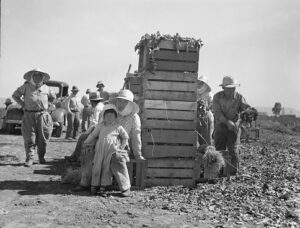 United States to have Japan stop issuing worker’s passports to come into the United States. Of course, immigration was not completely stopped. There were exceptions, like the exceptions for Japanese immigration for the spouses of those who were already working in the United States, and a select group of individuals who were requested to move to America. However, in 1924 a formal act called the Immigration Act of 1924 helped to tighten the banning of individuals. Nevertheless, it is Manjiro who is credited with getting the whole Japanese immigration started, and in 1992, he was commemorated for his early arrival when Congress dedicated the month of May as Asian American and Pacific Islander Heritage Month.
United States to have Japan stop issuing worker’s passports to come into the United States. Of course, immigration was not completely stopped. There were exceptions, like the exceptions for Japanese immigration for the spouses of those who were already working in the United States, and a select group of individuals who were requested to move to America. However, in 1924 a formal act called the Immigration Act of 1924 helped to tighten the banning of individuals. Nevertheless, it is Manjiro who is credited with getting the whole Japanese immigration started, and in 1992, he was commemorated for his early arrival when Congress dedicated the month of May as Asian American and Pacific Islander Heritage Month.
 Wars leave unfortunate consequences, one of the biggest being orphaned children. World War II is no exception to that rule. After the surrender of Germany, the nation was basically split into four sections…the American Zone, the Soviet Zone, the British Zone, and the French Zone. It was all part of the denazification process. The term denazification refers to the removal of the physical symbols of the Nazi regime. In 1957 the West German government re-issued World War II Iron Cross medals, among other decorations, without the swastika in the center. That was just one of the ways that the Nazi regime was removed from Germany.
Wars leave unfortunate consequences, one of the biggest being orphaned children. World War II is no exception to that rule. After the surrender of Germany, the nation was basically split into four sections…the American Zone, the Soviet Zone, the British Zone, and the French Zone. It was all part of the denazification process. The term denazification refers to the removal of the physical symbols of the Nazi regime. In 1957 the West German government re-issued World War II Iron Cross medals, among other decorations, without the swastika in the center. That was just one of the ways that the Nazi regime was removed from Germany.
Another way was the Denazified School System and the denazification of the rest of the German government…which was then reassembled without the Nazi symbolism. With the school system effectively out of commission, the children of Berlin had very little or even no structure in their lives at all. These were children whose lives had been shredded by the war, many of whom had been orphaned by the conflict or had lost at least one parent. That lead to an overall lack of adult supervisors. Children, and especially teens and preteens, roamed the streets in packs. The situation was especially difficult for the children who had lost both parents. There weren’t any real orphanages either, and so these children formed their own “families” on the streets…like street gangs. These children were known as German “wolf children” also known as “Wolfskinder,” but the reality was that they were simply the forgotten orphans of World War II.
The schools eventually reopened, but they were often in half-ruined facilities, that were underfunded and understaffed, with some schools reporting student-to-faculty ratios of 89 to 1. That kind of a classroom ratio is far too big to be able to effectively teach the students. And the re-opened schools didn’t really address the issue of these orphaned “wolf children” who were often in hiding whenever authorities were around. These children were most likely afraid of authority, because it was the authorities who got their parents killed in the first place. Many of these children were forced to flee what was then East Prussia to Lithuania at the end of World War II. They felt like the German government had failed them. These children survived hunger, cold, and the loss of their identity, and the German government had long overlooked them, so why would they trust the government now.
No one really knows just how many “wolf children” there were. That number can only be estimated. Some say there were up to 25,000 of them roaming the woods and swamps of East Prussia and Lithuania after 1945. Russians were actually forbidden from taking in these “fascist children.” These children were actually told to go to Lithuania and given the promise that there would be food there. When they arrived, they couldn’t speak the language and they had no papers, so they had no identity…no one could even know their names. Those who were taken in often had every shred of memorabilia from their past stripped from them and tossed in the trash. That was the last part of who they really were. It was the price they would pay for food, safety, and security; and it was a failure of the German government, and the four nations who were in charge of reorganizing Germany. I suppose some would disagree with me on that note, but the reality is plain to see. If these children came across kind locals, the “Vokietukai” or little Germans, in Lithuanian, as they were known, were helped with buckets of soup in front of the doors, giving the children a little nourishment. If the residents were not so kind, they would set their dogs on the children.
While the “Vokietukai” had many struggles in Lithuania, life was still better than the fate that awaited the 
 children who were too weak to make it to the Baltic states. There were thousands of these children, and they were sent to Soviet homes run by the military administration. That was the fate of approximately 4,700 German children in 1947, according to historian Ruth Leiserowitz, who has researched the fates of wolf children. Later that year, many of them were sent to the Soviet occupation zone. That zone later became the German Democratic Republic (GDR). Those poor children traveled in freight trains without any straw to sleep on…similar the Holocaust deportation years. These children were young…between 2 and 16 years of age. They arrived in East Germany after four days and four nights…really more dead than alive. There, they were put in orphanages or adopted by avid Communists. They never really escaped Communism…and that is the saddest part of all.
children who were too weak to make it to the Baltic states. There were thousands of these children, and they were sent to Soviet homes run by the military administration. That was the fate of approximately 4,700 German children in 1947, according to historian Ruth Leiserowitz, who has researched the fates of wolf children. Later that year, many of them were sent to the Soviet occupation zone. That zone later became the German Democratic Republic (GDR). Those poor children traveled in freight trains without any straw to sleep on…similar the Holocaust deportation years. These children were young…between 2 and 16 years of age. They arrived in East Germany after four days and four nights…really more dead than alive. There, they were put in orphanages or adopted by avid Communists. They never really escaped Communism…and that is the saddest part of all.

 When I think of a loved one passing, my first thought is…how can it be that life continues on for most of us, but for them, life hit a roadblock. It just seems so strange. Knowing that my father-in-law, who was my second dad, has been in Heaven for nine long years. Of course, he wasn’t the first of my parents to leave, that was my own dad, Al Spencer who left us in 2007. Nor would he be the last parent, because that would be my mother-in-law, Joann Schulenberg. Nevertheless, with each passing, comes that strange feeling that something is amiss in the time continuum of life. One life doesn’t go forward, while all the others do.
When I think of a loved one passing, my first thought is…how can it be that life continues on for most of us, but for them, life hit a roadblock. It just seems so strange. Knowing that my father-in-law, who was my second dad, has been in Heaven for nine long years. Of course, he wasn’t the first of my parents to leave, that was my own dad, Al Spencer who left us in 2007. Nor would he be the last parent, because that would be my mother-in-law, Joann Schulenberg. Nevertheless, with each passing, comes that strange feeling that something is amiss in the time continuum of life. One life doesn’t go forward, while all the others do.
My father-in-law was a good man…a gentle man. He loved his family very much and wanted each of them to be ok when he was gone…but he was tired. I knew it the night before he left us, I even asked him if he was quitting me. He told me that he didn’t know. That told me he did know…and he was quitting me. We had fought so hard for his health, and I hated to see him give up, but…he was so tired. He was gone the next day, and I was not surprised when I got the call. And just like that…a phone call told me that he was gone, and once again I felt like another loved on had hit that roadblock in time, and the rest of us would have to go on without him.
My father-in-law worked hard all his life, in several lines of work. He was a man who was loyal and could always be counted on to get the job done. Not every worker can have that said of him. He was honored with years of service awards, and other awards. One of his favorite jobs, and certainly the most fun was when he drove the 
 bus for the Casper College Thunderbirds. He got to travel to place in the country that he had never been before…and he was loved by all of them.
bus for the Casper College Thunderbirds. He got to travel to place in the country that he had never been before…and he was loved by all of them.
My father-in-law was such a blessing to me. I couldn’t have asked for anyone better. Having in-laws who are loving, and totally accept you as their own, is the best gift anyone can receive. And my father-in-law was a gift…a wonderful gift, and I will be forever grateful for that gift from God. My father-in-law went to Heaven nine years ago today. We miss him every day. We love you, Dad.

 While on a trip to Tulsa, Oklahoma with my sisters, Caryl Reed and Alena Stevens, we happened to drive through the little town of Coffeyville, Kansas. We noticed a sign that said Dalton Graves. I immediate thought of the Dalton Gang and looked it up on my phone. Sure enough, Coffeyville is the site of a number of graves of the Dalton Gang. I find it strange that the gang would choose Coffeyville as the town to rob two banks at the same time, because it was in Coffeyville, that their brother Frank was buried. Frank had been a Deputy US Marshall based out of Fort Smith, Arkansas. On November 27, 1887, while involved in a gunfight with an outlaw gang near the Arkansas River, Frank Dalton was shot and killed by the outlaw, Will Towerly. It’s just odd that they would disrespect Frank’s memory in that way.
While on a trip to Tulsa, Oklahoma with my sisters, Caryl Reed and Alena Stevens, we happened to drive through the little town of Coffeyville, Kansas. We noticed a sign that said Dalton Graves. I immediate thought of the Dalton Gang and looked it up on my phone. Sure enough, Coffeyville is the site of a number of graves of the Dalton Gang. I find it strange that the gang would choose Coffeyville as the town to rob two banks at the same time, because it was in Coffeyville, that their brother Frank was buried. Frank had been a Deputy US Marshall based out of Fort Smith, Arkansas. On November 27, 1887, while involved in a gunfight with an outlaw gang near the Arkansas River, Frank Dalton was shot and killed by the outlaw, Will Towerly. It’s just odd that they would disrespect Frank’s memory in that way.
Nevertheless, it was in Coffeyville, Kansas that the Dalton Gang would make what was for all of them, except Emmett Dalton, a fatal decision. The men rode into town in the early morning hours of October 5, 1892. Their plan was to tie their horses to the hitching posts in front of the bank, however, the town had wisely removed them, meaning that one member would have to hold the horses, or they would have to tie the horses to a hitching post in another part of town. Choosing the latter, the gang tied their horses in what became known as “Death Alley” and headed for the banks.
Unfortunately for the gang, one of the townspeople recognized one of the gang members as he made his way to the bank. Immediately reporting this to the local law and the rest of the town, the people were ready for the gang when they emerged from the banks. A running gun battle ensued, and in the process, four members of the Dalton gang lost their lives. Killed were Bob Dalton, Grat Dalton, Bill Power, and Dick Broadwell. Emmett Dalton, the only surviving member of the gang was severely wounded and was not expected to live. Nevertheless, he recovered and served 14 years in jail before being pardoned.
Bob Dalton, Grat Dalton, and Bill Powers were buried in the same plot, in the Elmwood Cemetery, and for years the only marker for their grave was the metal hitching post to which they tied their horses on that fateful day. When Emmett Dalton was released, he purchased a grave marker for the three men, but the hitching post remains to this day. Also buried in Elmwood Cemetery are the four town defenders who lost their lives in that gunfight. Those lost were Lucius Baldwin, Charles Brown, Marshal CT Connelly, and George Cubine. Needless to 
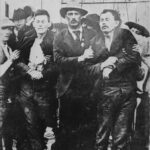 say, their graves received respectful stones from the very beginning, in order to rightly honor these brave men. Emmett Dalton moved to Southern California in 1907. He married Julia Johnson the following year, who survived him. During his California years, he capitalized on his notoriety…writing two books and doing some acting in Hollywood. Later, he sold real estate, as Southern California was developing rapidly with migrants from across the country. He died in 1937 at the age of sixty-six.
say, their graves received respectful stones from the very beginning, in order to rightly honor these brave men. Emmett Dalton moved to Southern California in 1907. He married Julia Johnson the following year, who survived him. During his California years, he capitalized on his notoriety…writing two books and doing some acting in Hollywood. Later, he sold real estate, as Southern California was developing rapidly with migrants from across the country. He died in 1937 at the age of sixty-six.

 My son-in-law, Travis Royce is always willing taking on something new in the yard. Whatever my daughter, Amy Royce can dream up, Travis is willing to make a reality for her. He even goes so far as to indulge her “need” to buy flowers. Travis is more of a lawn guy. He loves mowing their lawn and loves dressing up the yard part of their home into a beautiful sanctuary, and together, they have definitely succeeded. When we are at their house, the back yard if everyone’s favorite place to be. It’s quiet, peaceful, and relaxing. I love their back yard. The kids, Shai Royce and Caalab Royce, have even helped to make the back yard wonderful They got them some heat units so that when the nights are a little chilly, they can still enjoy the patio.
My son-in-law, Travis Royce is always willing taking on something new in the yard. Whatever my daughter, Amy Royce can dream up, Travis is willing to make a reality for her. He even goes so far as to indulge her “need” to buy flowers. Travis is more of a lawn guy. He loves mowing their lawn and loves dressing up the yard part of their home into a beautiful sanctuary, and together, they have definitely succeeded. When we are at their house, the back yard if everyone’s favorite place to be. It’s quiet, peaceful, and relaxing. I love their back yard. The kids, Shai Royce and Caalab Royce, have even helped to make the back yard wonderful They got them some heat units so that when the nights are a little chilly, they can still enjoy the patio.
Travis and Amy have found their own little getaway. They love to go to a little town in Washington called Ilwaco. It is a quaint little town on the Washington coast. They love to stroll through the cute little town and along the trail to Cape Disappointment State Park. The lighthouse there is of particular interest to them. Travis always looks like he is so at peace when he is standing there looking out to the ocean. It’s not really so odd, because he was born in San Diego, California and went to school in Puyallup, Washington. The West Coast is really in his blood, and anyone who knows him can easily see that.
Travis is an innovative man, who is quick thinking and can be very funny. In fact, he loves to be funny. I have 
 always loved that about him, because his humor fills my daughter’s home and life with laughter…and let’s face it…what could be better than a life with laughter in it? I have never been around someone, quite like Travis before…but, when I think about it, he really is one of a kind, with the possible exception on his son, Caalab, who is so much like his dad that it’s uncanny.
always loved that about him, because his humor fills my daughter’s home and life with laughter…and let’s face it…what could be better than a life with laughter in it? I have never been around someone, quite like Travis before…but, when I think about it, he really is one of a kind, with the possible exception on his son, Caalab, who is so much like his dad that it’s uncanny.
Travis has been a part of our family now for almost 27 years, and he has been such a blessing to us. There is no greater blessing for a mother, than to know that her daughter’s husband is her soulmate and best friend. I have been very blessed to know that Travi is exactly that for Amy, and always will be. Today is Travis’ birthday. Happy birthday Travis!! Have a great day!! We love you!!
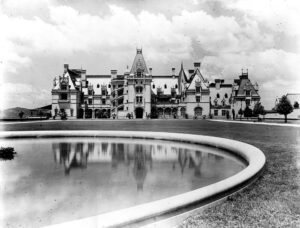
 During what became known as the Gilded Age in United States history, extending roughly from 1870 to 1900, the economy grew so rapidly that the wages of Americans, especially in the Northern and Western United States actually surpassed the wages in Europe, especially for skilled workers. Still, increased industrialization demanded an increased unskilled labor force too, so the there was an influx of millions of European immigrants looking for a better life, to fill the need for workers. Basically, the Gilded years were years of overwhelming extravagance.
During what became known as the Gilded Age in United States history, extending roughly from 1870 to 1900, the economy grew so rapidly that the wages of Americans, especially in the Northern and Western United States actually surpassed the wages in Europe, especially for skilled workers. Still, increased industrialization demanded an increased unskilled labor force too, so the there was an influx of millions of European immigrants looking for a better life, to fill the need for workers. Basically, the Gilded years were years of overwhelming extravagance.
While many of the estates of the Gilded Age were in the Eastern United States, not all the great estates were in places like New York City or Newport, Rhode Island. Some of the very wealthy apparently didn’t really like the Northern winter climates, so they chose to build their estates in areas of the South. One of the greatest of these southern estates was the Biltmore Estate near Asheville, North Carolina, The estate was built by George Washington Vanderbilt II between 1889 and 1896, and it is enormous!! The estate covers nearly 11 miles. Of course, the real difference between what we would consider a mansion, and the Gilded Era estates is the fact that the grounds are as extravagant as the homes. The main house of the Biltmore Estate has nearly 200,000 square feet!! Most of us consider a nice sized house to be 2,000 to 3,000 square feet, so 200,000 square feet, for me at least, is beyond what I can even imagine in a house. The construction was a huge undertaking, that literally took building an entire working village near the site to house the workers, manufacturers, and supplies. A three-mile railroad spur was even built just to transport building supplies to the construction site. More than 1,000 workers were hired to build the huge house.
The Biltmore remains in the ownership of the Vanderbilt family, with at least one member of the family living there until 1956, at which point it was operated as a historic museum. It is the largest privately owned home in the United States. To help with the high cost of modern maintenance and expenses, the house and grounds are 
 open to the public, for a price, and a number of ticketed events are held on the site throughout the year. At the request of the City of Asheville, which hoped to revitalize the area with tourism, and in an attempt to bolster the estate’s finances during the Great Depression, Cornelia and her husband opened Biltmore to the public in March 1930 at the request of the City of Asheville.
open to the public, for a price, and a number of ticketed events are held on the site throughout the year. At the request of the City of Asheville, which hoped to revitalize the area with tourism, and in an attempt to bolster the estate’s finances during the Great Depression, Cornelia and her husband opened Biltmore to the public in March 1930 at the request of the City of Asheville.

 May Day is an almost forgotten day of the “special days” on the calendar. When I was a kid, our mother, Collene Spencer helped us make “May Baskets” and fill them with candy. Then we would take them to the neighbors’ homes and hang them on the doorknobs. We would then knock on the door and go hide. The homeowner then had to try to find us…or they could just shout out their “thank you” and enjoy the candy. No matter what they decided to do, we always had a great time giving May Baskets, and I think it taught us to be givers.
May Day is an almost forgotten day of the “special days” on the calendar. When I was a kid, our mother, Collene Spencer helped us make “May Baskets” and fill them with candy. Then we would take them to the neighbors’ homes and hang them on the doorknobs. We would then knock on the door and go hide. The homeowner then had to try to find us…or they could just shout out their “thank you” and enjoy the candy. No matter what they decided to do, we always had a great time giving May Baskets, and I think it taught us to be givers.
There are a number of traditions that were carried out in the early years of May Day, but have since faded away. Things like the May Pole dance and fire cleansing (I’m not even sure what that is). There might be places  where they still celebrate in this way, and some towns actually have a permanent May Pole. Some other traditions like the May Baskets and spring cleaning have stuck it out for the long haul. I’ll bet you didn’t even know that spring cleaning actually started as a May Day tradition, and yet millions of people do some time of spring cleaning, yard preparation, and even redecorating or remodeling beginning on May Day.
where they still celebrate in this way, and some towns actually have a permanent May Pole. Some other traditions like the May Baskets and spring cleaning have stuck it out for the long haul. I’ll bet you didn’t even know that spring cleaning actually started as a May Day tradition, and yet millions of people do some time of spring cleaning, yard preparation, and even redecorating or remodeling beginning on May Day.
For me, these days, May Day doesn’t involve May Baskets. That is a tradition that went by the wayside with my adulthood. I think my mom would have done that for all of her life, if she could find willing co-conspirators, and that makes me a little sad, because Mom never really asked much of anyone. Nevertheless, she did love her 
 traditions, and it must have been a little sad for her to see May Baskets go by the wayside. For me, May Day really doesn’t mean anything much, except that Spring is finally…really here. The days are longer and warmer. I can get outside and walk on my trail, especially in the early mornings, which have been far too cold prior to this, and still might be a bit cold some mornings. It always seems like the year shifts into high gear on May Day, because while I don’t mind Fall, I don’t look forward to the coming Winter. I am more of a three-season girl, who would love to just skip Winter completely, but I live in the wrong state for that so…anyway, happy May Day everyone. May your celebration…whatever that is, be sweet and special.
traditions, and it must have been a little sad for her to see May Baskets go by the wayside. For me, May Day really doesn’t mean anything much, except that Spring is finally…really here. The days are longer and warmer. I can get outside and walk on my trail, especially in the early mornings, which have been far too cold prior to this, and still might be a bit cold some mornings. It always seems like the year shifts into high gear on May Day, because while I don’t mind Fall, I don’t look forward to the coming Winter. I am more of a three-season girl, who would love to just skip Winter completely, but I live in the wrong state for that so…anyway, happy May Day everyone. May your celebration…whatever that is, be sweet and special.

